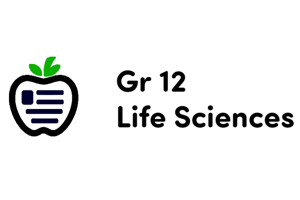Podcast
Questions and Answers
What characteristic distinguishes RNA from DNA regarding its structure?
What characteristic distinguishes RNA from DNA regarding its structure?
- RNA is exclusively located in the nucleus.
- RNA contains ribose sugar. (correct)
- RNA is always double stranded.
- RNA contains Thymine instead of Uracil.
What is the primary function of messenger RNA (mRNA) in protein synthesis?
What is the primary function of messenger RNA (mRNA) in protein synthesis?
- Attaches amino acids to the growing polypeptide chain.
- Translates the genetic code into amino acids.
- Carries the genetic code from the nucleus to the ribosome. (correct)
- Forms the structure of ribosomes.
Which statement accurately describes the production of ribosomal RNA (rRNA)?
Which statement accurately describes the production of ribosomal RNA (rRNA)?
- rRNA is synthesized in the nucleolus. (correct)
- rRNA is produced in the nucleus during replication.
- rRNA is synthesized in the cytoplasm.
- rRNA is formed during the process of translation.
In relation to transfer RNA (tRNA), which of the following statements is true?
In relation to transfer RNA (tRNA), which of the following statements is true?
Which feature of RNA allows it to play a distinct role in protein synthesis compared to DNA?
Which feature of RNA allows it to play a distinct role in protein synthesis compared to DNA?
Flashcards are hidden until you start studying
Study Notes
RNA Composition
- RNA is a single-stranded molecule found in the nucleus and cytoplasm
- RNA contains Uracil (U) instead of Thymine (T)
- RNA structure is based on the sequence of DNA
- RNA is involved in protein synthesis
- There are three types of RNA: messenger RNA (mRNA), ribosomal RNA (rRNA), and transfer RNA (tRNA)
Messenger RNA (mRNA)
- mRNA is involved in the process of transcription
- mRNA is a copy of the DNA sequence
- mRNA carries the genetic code from the nucleus to the cytoplasm
- mRNA attaches to ribosomes to initiate protein production
Ribosomal RNA (rRNA)
- rRNA is used in the formation of ribosomes
- rRNA is produced in the nucleolus
Transfer RNA (tRNA)
- tRNA is a small RNA molecule located in the cytoplasm
- tRNA carries a specific amino acid based on its anticodon
- tRNA plays a crucial role in the process of translation, which involves the synthesis of proteins
Differences between DNA and RNA
- DNA contains deoxyribose sugar, while RNA contains ribose sugar
- DNA utilizes Thymine (T) as a base, while RNA uses Uracil (U)
- DNA is a double-stranded molecule, while RNA is single-stranded
- Primarily found in the nucleus, DNA is also found in small loops in mitochondria and chloroplasts, while RNA can be found in the nucleus, cytoplasm, and ribosomes.
Studying That Suits You
Use AI to generate personalized quizzes and flashcards to suit your learning preferences.




